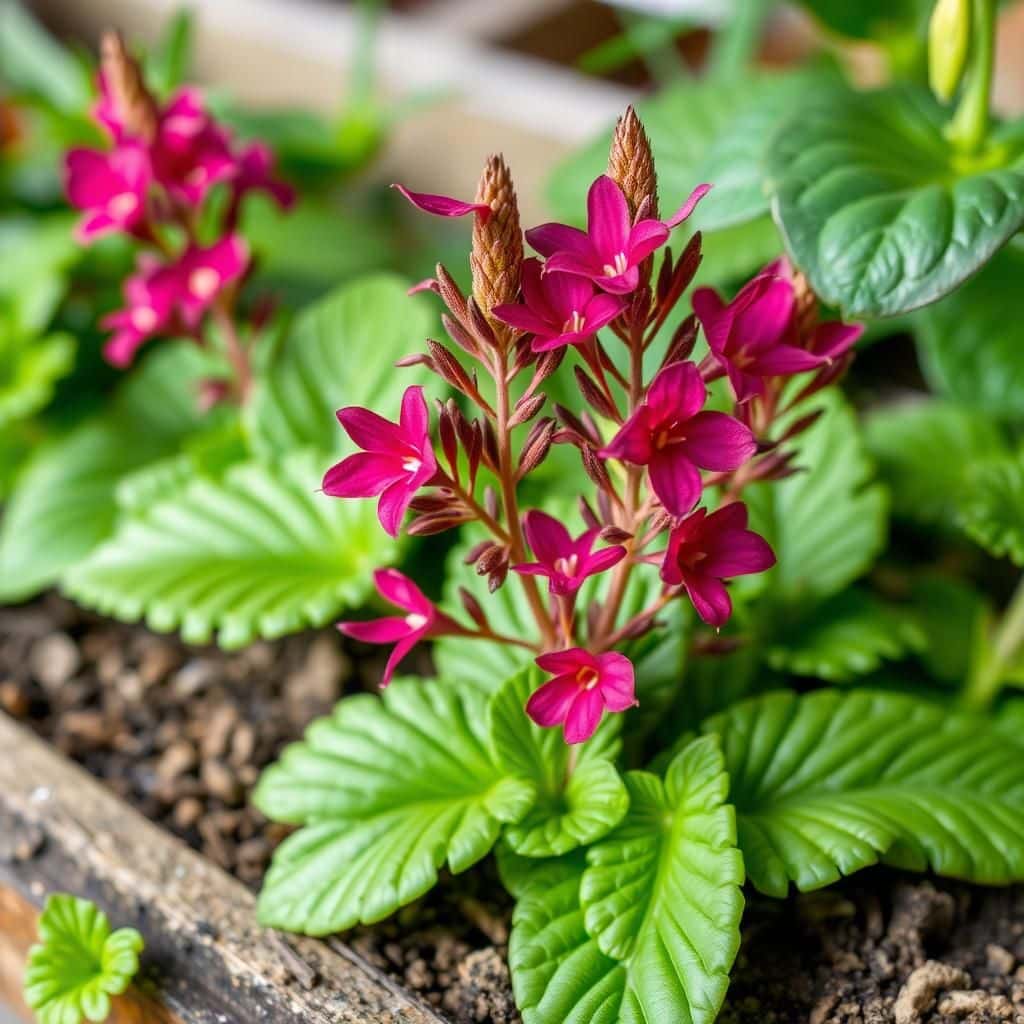Discover the Best Companion Plants: What Grows Well with Lobelia?

Lobelia is a stunning addition to any garden, known for its vibrant blooms and cascading foliage. However, to maximize its beauty and health, it’s essential to consider companion planting. By pairing lobelia with the right plants, gardeners can enhance growth, deter pests, and create a visually appealing landscape. This article explores the best companion plants that thrive alongside lobelia, highlighting their benefits and how they work together in harmony. Whether you’re looking to create a colorful border, attract beneficial insects, or improve soil health, the right companions can transform your garden into a flourishing ecosystem.
Companion Plants for Lobelia
Lobelia is a beautiful and versatile flowering plant that thrives in various conditions, making it a great companion for many other plants in the garden. When pairing lobelia with other species, it’s essential to consider companions that complement its growth requirements and aesthetics. For example, marigolds and petunias make excellent companions due to their similar light and water needs, while also providing a vibrant color contrast that enhances the visual appeal of your garden. Additionally, lobelia’s trailing habit pairs well with upright plants like delphiniums and salvias, which can create an eye-catching layered effect in flower beds. Finally, herbs such as basil and chives not only grow well alongside lobelia but also help in repelling pests, ensuring a healthier garden environment.
Planting with Marigolds
Marigolds are excellent companion plants for lobelia, as they share similar water and light requirements. Their bright, vibrant blooms provide a beautiful contrast to the delicate flowers of lobelia, making them an aesthetically pleasing combination. Additionally, marigolds are known for their pest-repelling qualities, which can help safeguard lobelia from common garden pests, thereby increasing the overall health of your garden.
Combining with Petunias
Petunias are another fantastic choice to plant alongside lobelia due to their compatible growing conditions. Both plants thrive in full sun and require well-drained soil, making them ideal partners. The variety of colors available in petunias is the perfect way to enhance the visual interest of your garden while allowing lobelia’s gentle blooms to shine. Together, they create a lively and colorful display throughout the growing season.
Pairing with Delphiniums
Delphiniums are tall, striking plants that add height to garden arrangements, making them an ideal partner for the cascading nature of lobelia. By planting delphiniums near lobelia, gardeners can achieve a layered look, where the trailing lobelia softly spills over the edges of pots or garden beds while the delphiniums rise majestically above. Both plants appreciate soil that retains moisture but is well-drained, allowing them to thrive together harmoniously.
See also:
Integrating Herbs Like Basil and Chives
Herbs such as basil and chives can be beneficial companions for lobelia due to their complementary growth habits and pest-deterring properties. Planting these herbs nearby not only helps to protect lobelia from pests but also enhances the overall health of the garden. Furthermore, basil’s fragrant foliage and chives’ unique flower clusters can add an extra layer of textural variety to the garden, making it a more visually appealing environment for both ornamental and edible plants.
Considerations for Soil and Water
When planting lobelia alongside other companion plants, it is crucial to consider the soil and water needs of all species involved. Lobelia thrives in well-drained soil that retains some moisture, so pairing it with plants that have similar soil preferences is essential. Additionally, regular watering is important, especially during dry spells, ensuring that both lobelia and its companions receive adequate moisture without being waterlogged. By focusing on compatible soil and water needs, gardeners can create a thriving mixed planting.
| Companion Plant | Light Requirements | Water Needs |
|---|---|---|
| Marigolds | Full Sun | Moderate |
| Petunias | Full Sun | Moderate |
| Delphiniums | Full Sun to Partial Shade | Moderate |
| Basil | Full Sun | Moderate |
| Chives | Full Sun | Moderate |
Understanding Lobelia's Growth Requirements for Companion Planting
Lobelia thrives in moist, well-drained soil and prefers partial to full shade, making it essential to select companion plants that share similar growing conditions. When pairing other plants with lobelia, it is crucial to consider factors such as light levels, moisture needs, and nutritional requirements to create a harmonious garden environment. Companion plants like ferns, hostas, and certain types of shade-loving annuals can enhance the growth and aesthetic appeal of lobelia while preventing overcrowding and competition for resources, ensuring an abundant and vibrant garden.
The Benefits of Companion Planting with Lobelia
Companion planting with lobelia offers several benefits, including improved nutrient uptake and better pest management. Choosing plants that work synergistically can help create an ecosystem that supports biodiversity and enhances the overall health of your garden. For instance, incorporating decomposing leaf litter from companion plants can provide essential nutrients to lobelia, while aromatic plants can deter harmful pests, fostering a more resilient garden environment.
Optimal Companion Plants for Lobelia
When selecting companion plants for lobelia, consider options like ferns, hostas, and astilbe. These plants not only share similar light and moisture requirements, but they also complement lobelia's striking colors, creating a visually appealing combination. Additionally, these companions can help provide ground cover, reducing weeds and retaining soil moisture, which is advantageous for lobelia's growth.
See also:
Seasonal Considerations for Lobelia and Its Companions
Understanding the seasonal growth habits of lobelia and its companions is crucial for successful planting. For instance, annual companions that bloom in conjunction with lobelia, such as impatiens or begonias, can provide long-lasting color throughout the growing season. Additionally, considering winter dormancy for perennials ensures you combine plants that offer visual interest in different seasons, enhancing your garden's aesthetic all year round.
Watering Needs for Lobelia and Companion Plants
Proper watering techniques are vital when growing lobelia alongside companion plants. Lobelia prefers consistently moist conditions, so it is essential to group it with companions that also have similar water requirements. Utilizing mulch can help maintain soil moisture while preventing waterlogging, which can harm lobelia and its plant partners. Monitoring soil moisture levels and adjusting watering schedules will ensure that all plants thrive.
Potential Pests and Diseases Affecting Lobelia and Companions
Both lobelia and its companion plants can face a variety of pests and diseases. Being aware of potential issues such as aphids, slugs, and foliar diseases can help in implementing proactive measures, such as introducing beneficial insects or appropriate fungicides. Keeping a close eye on the health of all plants in the garden can help in early detection and treatment, ensuring a flourishing environment for lobelia and its companions.
Questions from Our Readers
What plants are good companions for lobelia?
Lobelia pairs well with annuals such as petunias and impatiens, creating a vibrant display. It also grows harmoniously with perennials like salvia and ferns, which complement its colorful blooms and add textural variety to the garden.
Does lobelia attract beneficial insects?
Yes, lobelia is known to attract beneficial insects like pollinators and butterflies, thanks to its nectar-rich flowers. This characteristic makes it an excellent choice for creating a pollinator-friendly garden.
See also:
Can lobelia be planted with vegetables?
While lobelia can enhance the beauty of a vegetable garden, it is best to plant it with flowering herbs or ornamental plants rather than vegetables. This is because lobelia does not typically provide any nutritional benefits or companion planting advantages to vegetables.
How much sunlight does lobelia need when planted with other plants?
Lobelia thrives in partial to full shade, so it's crucial to consider sunlight requirements when planting with other species. Ensuring that companion plants share similar light preferences will promote healthier growth and prevent competition for sunlight.

If you want to read more articles like Discover the Best Companion Plants: What Grows Well with Lobelia?, we recommend you check out our Plants category.
Leave a Reply
Related Articles